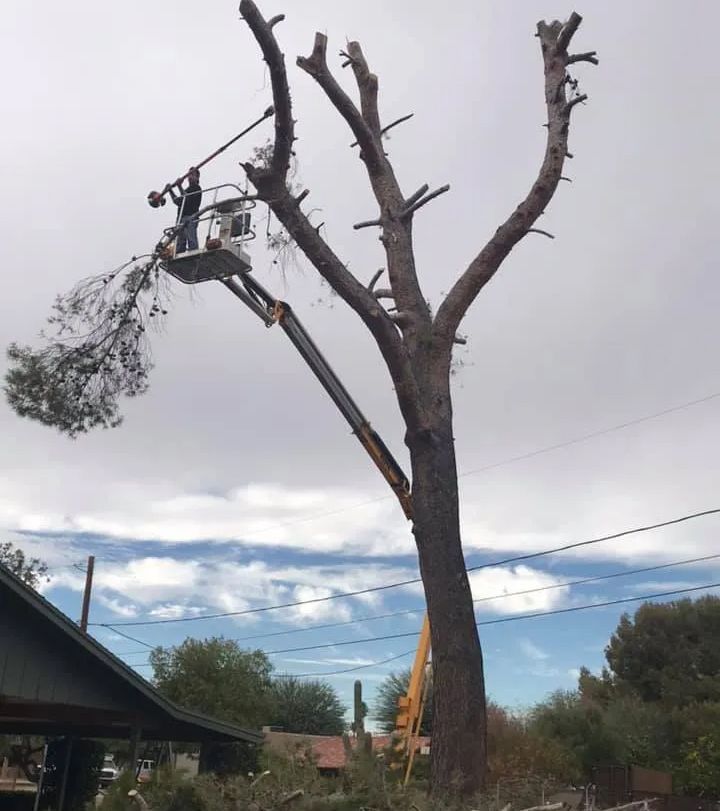Don’t Ignore these Warnings that a Tree Is More Likely to Topple in High Winds

Big trees can become extremely dangerous when weakened or unstable—especially during high winds. A falling tree or large limb can cause severe damage to your home, vehicles, and nearby power lines, not to mention the safety risk to people below. The good news is that trees often give warning signs before they fail. Knowing what to look for can help you take action early and prevent a potentially serious accident. At Roy’s Trees, we provide expert hazardous tree removal in the greater Phoenix area. Here are four signs that a tree may be at higher risk of toppling in strong winds.
Significant Tilting
A tree that’s leaning noticeably to one side is one of the clearest indications of instability. While some trees naturally grow at an angle, a lean that has recently developed or increased in severity could signal root damage or soil movement. High winds put tremendous pressure on leaning trees, increasing the likelihood of them falling. If you notice a new lean—especially if the ground near the base appears cracked or lifted—contact a professional right away for an assessment.
Split Trunks and Branches
Cracks, cavities, and splits in a tree’s trunk or major limbs often mean the tree’s structural integrity has been compromised. These weaknesses can cause the tree to break apart during a storm. Even if the damage looks minor from the outside, the internal wood may be decaying or hollow, making the tree far less stable than it appears. Professional evaluation is essential to determine whether the tree can be safely pruned or if removal is necessary.
Exposed or Damaged Roots
A tree’s roots are its anchor. When they’re damaged, decayed, or exposed, the entire tree becomes more susceptible to falling in windy conditions. Construction work, erosion, and compacted soil can all harm roots or reduce their ability to support the tree. Warning signs include visible roots lifting from the ground, soil disturbance around the base, or fungal growth near the root zone. Because root issues often develop unseen, any visible damage should be taken seriously.
Dead or Dying Branches
Dead or brittle branches are much more likely to snap in high winds, including large limbs overhanging structures or driveways. When parts of a tree are no longer receiving nutrients, it’s a sign of poor overall health and stress. A canopy full of deadwood often indicates deeper issues that could lead to full tree failure during a storm.
Tree Removal in Phoenix, AZ
For
tree removal in Phoenix and the surrounding area, contact Roy’s Trees at
602-881-2775. Feel free to give us a call to arrange an arborist estimate in greater Phoenix, AZ!


